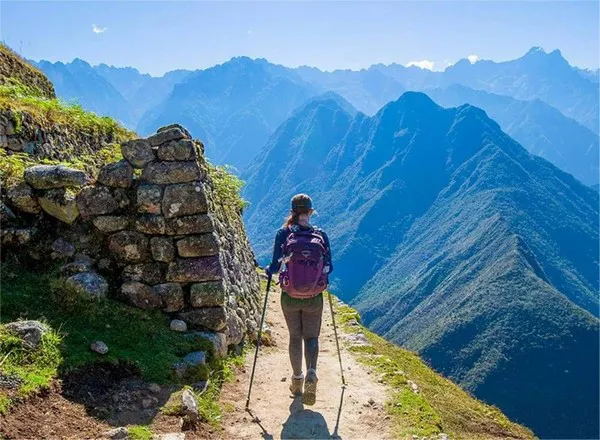Hiking in hot weather can be a rewarding yet challenging experience. Proper preparation, especially in terms of what you wear, is essential to ensure comfort, safety, and enjoyment on the trail. When the temperature soars to 90 degrees Fahrenheit or higher, the right clothing can help you stay cool, protected, and hydrated. This article explores the best clothing choices for hiking in 90-degree weather, considering materials, styles, and additional accessories to keep you cool and comfortable.
The Importance of Choosing the Right Clothing
When hiking in hot weather, your body works hard to regulate its temperature. The right clothing can aid in this process by facilitating sweat evaporation, providing UV protection, and minimizing chafing. Here are key factors to consider:
- Moisture-Wicking Fabrics: These fabrics draw sweat away from your skin and promote evaporation, helping to keep you cool and dry.
- UV Protection: Clothing with built-in UV protection can shield your skin from harmful rays, reducing the risk of sunburn.
- Breathability: Breathable materials allow air to circulate, enhancing cooling and reducing the likelihood of overheating.
- Lightweight Materials: Lightweight fabrics reduce the burden on your body, allowing for greater mobility and comfort.
- Color: Light colors reflect sunlight, whereas dark colors absorb heat. Choose lighter shades to stay cooler.
Top Clothing Choices for Hot Weather Hiking
Shirts
Moisture-Wicking T-Shirts: Opt for shirts made from synthetic materials such as polyester or nylon, which are excellent at wicking moisture. Look for those with mesh panels or ventilation features to enhance breathability. Brands like Patagonia, Columbia, and REI offer high-quality options designed for hot weather hiking.
Long-Sleeve Shirts: While it might seem counterintuitive, lightweight, long-sleeve shirts can provide better protection against the sun without compromising on breathability. Look for shirts with UPF ratings for added sun protection. Roll-up sleeves can offer versatility, allowing you to adjust based on the temperature and sun exposure.
Pants and Shorts
Convertible Pants: These versatile pants can be zipped off at the knees to convert into shorts, offering flexibility as temperatures fluctuate. They are typically made from lightweight, quick-drying materials and often feature multiple pockets for convenience.
Hiking Shorts: For maximum breathability and freedom of movement, hiking shorts are an excellent choice. Select shorts made from moisture-wicking, stretchy fabrics to prevent chafing and enhance comfort. Ensure they are of an appropriate length to protect your thighs from sunburn.
Footwear
Hiking Boots vs. Trail Runners: The choice between hiking boots and trail runners depends on the terrain and personal preference. In hot weather, lightweight, breathable trail runners are often preferable as they provide better ventilation and reduce the risk of overheating. However, if the trail is rugged or you need extra ankle support, opt for lightweight, breathable hiking boots.
Socks: Choose moisture-wicking, breathable socks made from materials like merino wool or synthetic blends. Avoid cotton socks, as they retain moisture and increase the risk of blisters. Look for socks with cushioned soles and arch support for added comfort.
Accessories for Hot Weather Hiking
Hats
Wide-Brimmed Hats: A wide-brimmed hat provides excellent sun protection for your face, neck, and ears. Look for hats with UPF ratings and ventilation features to keep your head cool.
Caps with Neck Flaps: For added sun protection, consider caps with built-in neck flaps. These flaps shield your neck from direct sunlight, reducing the risk of sunburn.
Sunglasses
UV Protection: Sunglasses with 100% UV protection are essential to protect your eyes from harmful rays. Polarized lenses can reduce glare, enhancing visibility and comfort.
Neck Gaiters and Bandanas
Multi-functional: Neck gaiters and bandanas can be worn in various ways to provide sun protection, absorb sweat, and keep dust and debris out. Wetting them before use can provide a cooling effect as the water evaporates.
Gloves
Sun Gloves: Lightweight gloves with UV protection can protect your hands from sunburn without causing overheating. They are especially useful if you are using trekking poles, which expose the backs of your hands to the sun.
Hydration and Cooling Strategies
Hydration Packs
Water Reservoirs: Hydration packs with built-in water reservoirs (bladders) allow you to drink hands-free while hiking. These packs often have insulated tubes to keep water cool, encouraging frequent hydration.
Bottles: If you prefer bottles, opt for insulated ones that keep water cold for longer periods. Carrying multiple bottles ensures you have enough water for the entire hike.
SEE ALSO: Local Outdoorsmen Set to Join Mississippi Outdoor Hall of Fame
Electrolytes
Electrolyte Supplements: In hot weather, you lose electrolytes through sweat. Replenishing them with electrolyte tablets, powders, or drinks helps maintain your body’s balance and prevents dehydration.
Cooling Towels
Evaporative Cooling: Cooling towels are designed to retain water and provide a cooling effect as it evaporates. Wet the towel, wring it out, and drape it around your neck or over your head for instant relief.
Additional Tips for Hot Weather Hiking
- Plan Your Hike Early or Late: Avoid the peak heat of the day by starting your hike early in the morning or late in the afternoon. The cooler temperatures during these times can make your hike more enjoyable.
- Seek Shade: Take breaks in shaded areas to cool down and protect yourself from direct sunlight.
- Monitor Your Body: Pay attention to signs of heat-related illnesses such as heat exhaustion or heat stroke. Symptoms include excessive sweating, dizziness, nausea, and confusion. If you experience any of these, seek shade, hydrate, and cool down immediately.
- Apply Sunscreen: Even with protective clothing, applying sunscreen to exposed skin is crucial. Choose a broad-spectrum sunscreen with SPF 30 or higher, and reapply every two hours or after sweating.
Conclusion
Hiking in 90-degree weather requires thoughtful clothing choices and strategies to stay cool and protected. Prioritize moisture-wicking, breathable, and lightweight fabrics, and consider accessories that offer sun protection and cooling effects. Stay hydrated, monitor your body for signs of overheating, and plan your hike to avoid the peak heat. With the right preparation, you can enjoy the beauty of the trail even in the hottest conditions.

